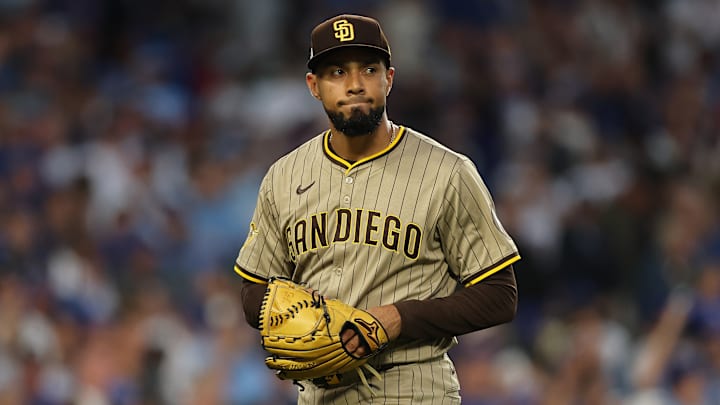It always felt like the San Diego Padres were running two timelines in parallel: the present built around a veteran ninth-inning stopper and the near future shaped around the most electric right arm they could acquire.
Robert Suárez’s decision to opt out of the final two years and $16 million of his deal, as first reported by the New York Post’s Jon Heyman, collapses those timelines into one. The clarity is striking. San Diego no longer has to thread the needle between deference to an established closer and development of a successor. The successor is here, and his name is Mason Miller.
Robert Suarez opt-out frees Padres to build a Miller-led bullpen
If that sounds “expected,” that’s because it was. The front office traded for Miller during the 2025 season with a very specific runway in mind: finish out the year as a high-leverage bridge in front of Suárez, then slide into the ninth when the contract math and competitive window aligned. Suárez exercising his opt-out merely accelerates what was already a carefully staged handoff. It also gives A.J. Preller a cleaner offseason calculus, reallocate dollars across depth and middle-innings reliability, not the top of the relief market, while leaning into the cost-controlled dominance Miller offers at the back end.
In practical terms, the plan looked like this from the moment the papers were signed: Miller in the seventh or eighth against pockets of danger, with the ninth protected for Suárez. That on-ramp matters. It let the Padres test back-to-backs, travel rhythm, and matchup usage without the psychological weight of “closer or bust.” The byproduct is a 2026 bullpen that already knows how to play with a lead: the eighth belongs to whichever matchups shorten the inning the most, the ninth belongs to a power arm that misses bats without inviting traffic.
Yes, there was chatter about moving Miller back to the rotation for 2026, he started as a prospect and has the build and carry to tempt any player-dev group. But the bullpen fit is the cleaner bet right now. Two elite pitches play as a weaponized, three-out solution more consistently than as a five-and-dive starter, and the injury/efficiency trade-off tilts toward leverage. Sixty to seventy of the Padres’ highest-leverage outs can be worth more than 140 moderate-leverage innings, especially for a club that wants to stack win probability in the final third of games. Keeping Miller in the ninth also simplifies workload management and preserves his late-game explosiveness across the full season.
The knock-on effect is straightforward roster building. With the ninth settled, the Padres can spend the winter fortifying the lanes in front of Miller: one more dependable righty who controls the zone, a lefty who handles premium left-handed bats, and a depth tier that keeps everyone fresh through August. The budget picture helps; swapping a veteran closer salary for a pre-arb anchor at the back end frees resources to chase multiple middle-relief solutions instead of one marquee name. And if internal options pop, you’ve insulated yourself without overcommitting guaranteed dollars.
Suárez’s opt-out doesn’t create a hole so much as reveal a blueprint. The Padres acquired Mason Miller to be the answer in the ninth, and 2026 is the moment to say it out loud. The job now isn’t to debate his role, it’s to build the cleanest path to him, protect his workload, and make the last six outs feel inevitable.
